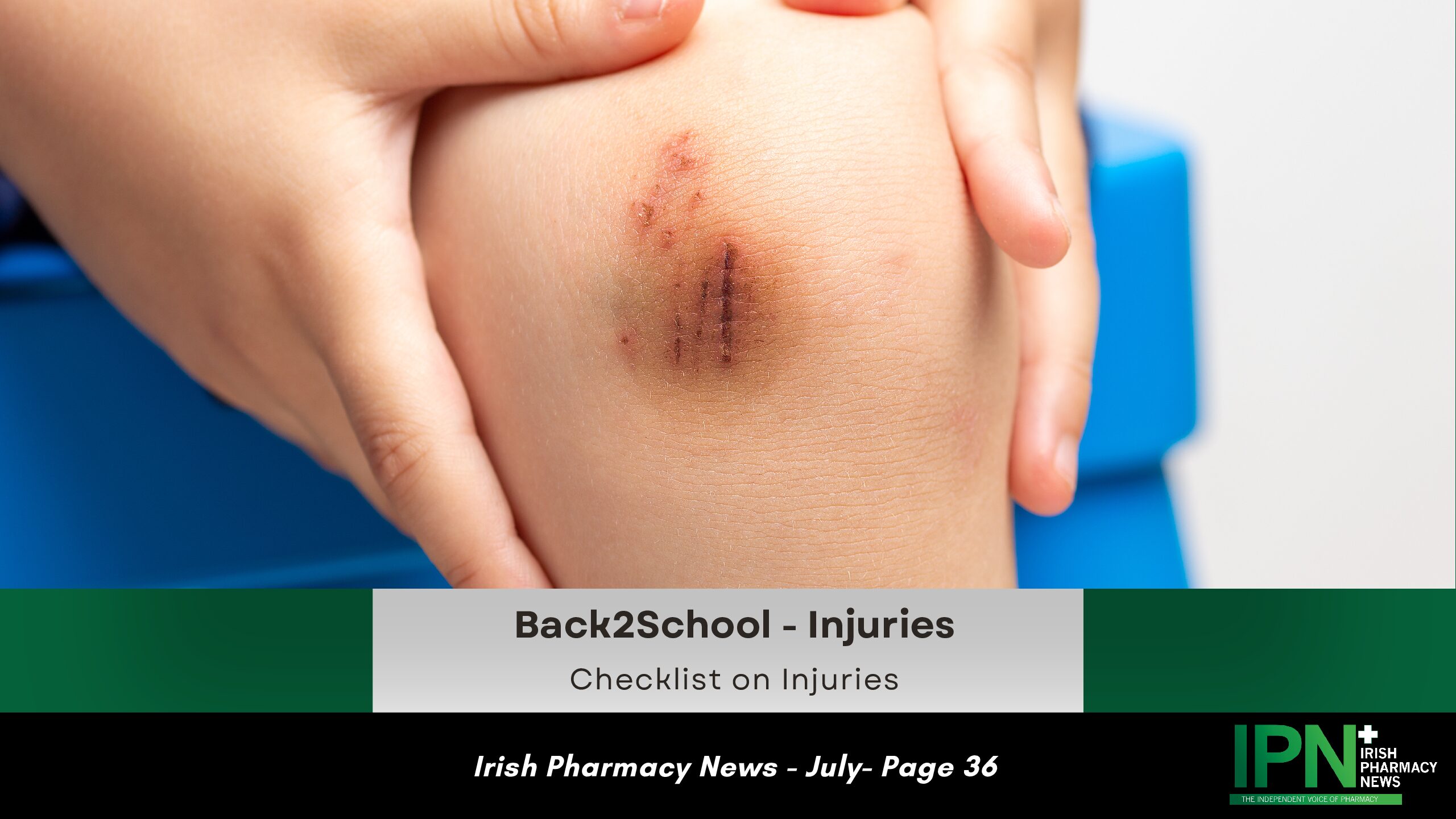Checklist on Injuries
With the return to school looming, now is the perfect time for an important check on first aid in schools. Trips, falls and slips in school are only natural and some of the most common injuries we see come from the playground. Sports-related injuries will also be common and so ensure your pharmacy is stocked with a ready supply of external analgesics and hot and cold treatments. First aid is easy to learn, easy to remember and easy to do. Pharmacists have the opportunity not only to demonstrate how easy first aid is, but also to advocate for the public to learn more themselves.
Cuts, scrapes, and bruises are among the most common injuries, and no family member is safe from minor accidents. Fortunately, these injuries usually can be treated at home without a doctor visit. Pharmacists need to be able to advise patients on how to treat these injuries if medical attention is not necessary, as well as to counsel patients as to when they should seek medical attention.
Scrapes (or abrasions) are wounds in which layers of skin are scraped or torn. The most common sites for scrapes are the hands, elbows, and knees. These injuries often are the result of a fall. Although the scrapes may ooze blood, bleeding does not always occur. Object penetrating the skin cause cuts (or lacerations). Depending on the depth, cuts often will bleed.
Bruises are the result of hard contact with a person or an object. The impact causes an injury to the tissue beneath the skin, and blood from the injury settles near the skin. Bruises usually start out looking red, then within a few hours turn blue or purple, and finally appear yellow as they fade.
Treating Cuts and Scrapes
Minor scrapes and cuts are easily treated at home with basic wound-care or first-aid supplies. Because cuts can happen at any time, every home should have tweezers, gauze pads, bandages, and antibiotic ointment.
Here are some steps that pharmacists should tell patients to follow in treating cuts at home:
• Rinse a cut with cool water
• Wash around the cut with soap; avoid getting soap into the wound
• Remove dirt and debris from the wound with tweezers; clean the tweezers with rubbing alcohol before using them
• Apply direct pressure with a clean gauze pad to a bleeding cut
• Treat the cut with antibiotic ointment
• Cover the cut with a bandage (deeper cuts may require a butterfly bandage)
• Do not pick at a scab while a cut is healing
Treating Bruises
Although bruises can be painful, treatment is limited. The best care for bruises involves rest and ice. Ice stops blood flow to the injury site, thus limiting the size of the bruise. Rest allows the site to heal.
Here are some further guidelines for patients for treating bruises at home:
• Apply ice packs or cold compresses as soon as possible
• Reapply ice packs every hour for 10-15 minutes during the first day, if needed
• With bruised legs or feet, elevate the legs as much as possible during the first day
• Take acetaminophen, if needed, for pain; do not take aspirin
• With large bruises, limit activity during the first day
• Use heat packs after 48 hours to promote healing
Here are some signs that bruises need medical attention:
• The bruise swells
• The bruise does not start to fade within a week
• The bruise occurs easily or for no obvious reason
Burns and scalds
A burn is caused by dry heat, such as fire or an iron, while a scald is caused by wet heat, such as boiling water.
Treatment and advice
• Remove any clothing or jewellery near the burnt area of skin, but not if it is stuck to the skin
• Cool the burn with cool running water for 20-30 minutes – don’t use ice, iced water or creams
• After cooling the burn, cover it with a layer of cling film
• Recommend an analgesic
• Raise the affected area to reduce swelling.
When to refer
• Large burns bigger than the size of the patient’s hand
• Deep burns
• Any burn on the face, neck, hands, feet, joints or genitals
• All chemical and electrical burns
• Any sign of shock
• Children under 10 years of age
• Anyone with a medical condition, such as heart, lung or liver disease, or diabetes
• Anyone with a compromised immune system.
Read IPN July
Read our Latest Features









